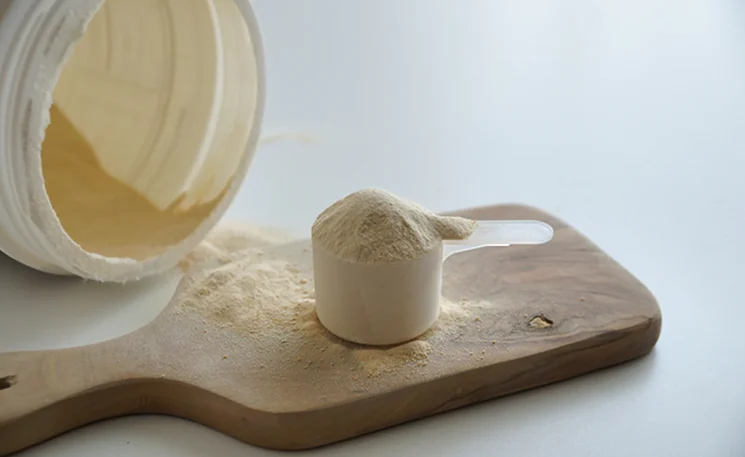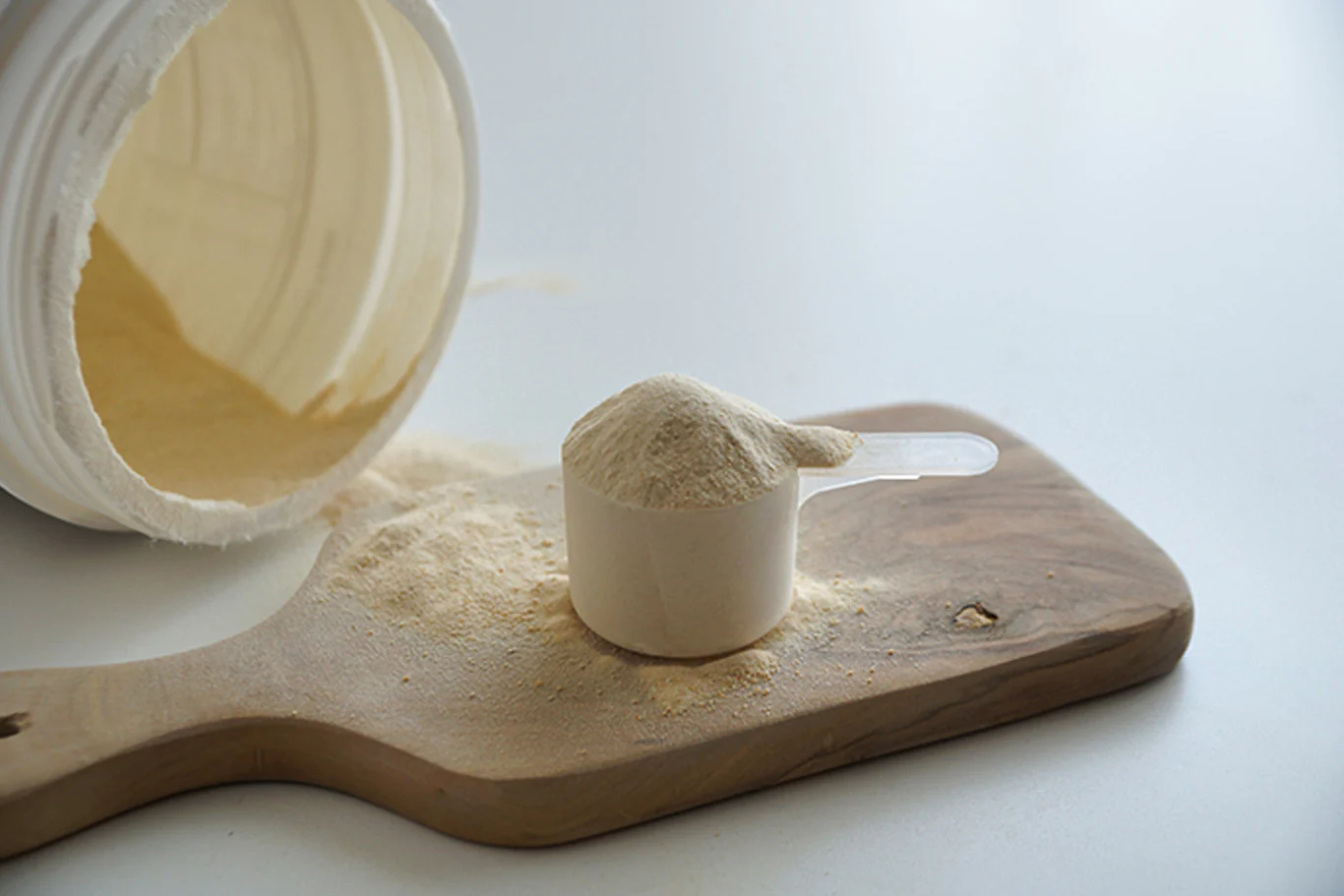How do you reintroduce foods after the elimination phase in AIP?
The AIP Protocol (Autoimmune Protocol Diet) is a well-structured approach designed to help individuals identify food triggers that may cause inflammation and worsen autoimmune conditions. It consists of two main phases — the elimination phase and the reintroduction phase. While the elimination phase focuses on removing potential irritants like grains, legumes, dairy, and processed foods, the reintroduction phase is about carefully testing these foods to understand which ones your body tolerates well.
Transitioning into the reintroduction phase can be both exciting and challenging. It’s the time when you begin to expand your diet again and find a sustainable long-term eating plan. However, the key to success lies in being methodical and patient. Let’s explore how to reintroduce foods after the elimination phase of the AIP Protocol, and how supportive nutrients like Grass Fed Collagen can play a vital role in maintaining gut health during this phase.
1. Understanding the Purpose of the Reintroduction Phase
The main goal of the reintroduction phase is to identify which foods trigger symptoms and which ones your body can tolerate. During the elimination phase, you remove common inflammatory foods for at least 30 to 90 days. Once symptoms like fatigue, pain, or digestive issues improve, you can begin reintroducing foods one at a time.
The purpose isn’t to restrict forever but to find your personal balance. Everyone’s immune system reacts differently — what triggers inflammation in one person may be harmless for another. The AIP Protocol emphasizes individuality, helping you create a personalized diet that promotes healing and long-term wellness.
2. Timing Is Everything: When to Start Reintroducing Foods
You should only begin the reintroduction phase once your autoimmune symptoms have significantly reduced or stabilized. Rushing into it too soon can cloud your results and make it harder to identify triggers.
Before you start:
- Make sure you feel consistently good for at least a couple of weeks.
- Track your symptoms, sleep, mood, and digestion to establish a baseline.
- Reintroduce foods when you are calm, well-rested, and not under stress.
Remember, your immune system can be sensitive. The AIP Protocol works best when you move slowly and mindfully through each step.
3. How to Reintroduce Foods Step by Step
The reintroduction phase involves testing one food at a time, waiting several days, and carefully observing any reaction. Here’s the process:
Step 1: Choose One Food
Start with a food that is nutrient-rich and least likely to cause a reaction, such as egg yolks, ghee, or seed-based spices.
Step 2: Eat a Small Amount
On day one, begin with a small portion — for example, one teaspoon. Wait 15 minutes and observe how your body feels.
Step 3: Gradually Increase
If you feel fine, eat a slightly larger portion (one tablespoon). After a few hours, if no symptoms appear, you can consume a normal portion later in the day.
Step 4: Wait and Observe for 3 Days
Avoid introducing any new foods for at least 72 hours. Monitor for symptoms like fatigue, headaches, digestive issues, rashes, or joint pain. These may indicate that the food is not well-tolerated.
Step 5: Keep a Food Journal
Document each reintroduction with details about the food, quantity, time, and any reactions. This helps you identify patterns and make informed decisions about what foods you can include in your long-term diet.
4. The Order of Reintroduction Matters
Following a strategic order can increase your success. Begin with the least inflammatory foods and move toward those more likely to trigger symptoms. A common reintroduction order in the AIP Protocol is:
- Nutrient-dense foods like egg yolks and grass-fed ghee.
- Legumes and seeds such as green beans or sunflower seeds.
- Nightshades and dairy, including tomatoes or grass-fed butter.
- Grains and processed foods, like rice or oats, introduced last.
By progressing in this order, you minimize setbacks and protect the progress made during the elimination phase.
5. The Role of Gut Healing During Reintroduction
Even after the elimination phase, your gut may still need support. Healing the intestinal lining helps your body handle new foods better and reduces the likelihood of flare-ups.
This is where Grass Fed Collagen becomes particularly valuable. It’s rich in amino acids like glycine and proline, which are essential for repairing the gut lining, supporting skin health, and maintaining joint flexibility. Adding Grass Fed Collagen to smoothies, soups, or teas provides ongoing nourishment and helps you transition smoothly into the reintroduction phase.
Collagen not only enhances gut resilience but also supports overall recovery. When you’re reintroducing foods, your digestive system works harder to process new ingredients, and collagen helps strengthen it from within.
6. Managing Reactions and Setbacks
It’s normal to experience reactions during reintroductions. If a food triggers symptoms, don’t be discouraged — it simply means your body isn’t ready for it yet. Remove the food again and wait a few weeks before trying it once more.
Common reactions include:
- Digestive upset (bloating, cramps, diarrhea)
- Fatigue or brain fog
- Joint pain or stiffness
- Mood swings or skin breakouts
When these occur, return to your safe AIP foods and allow your body to recover. Over time, you may find that foods that once caused reactions become tolerable again as your gut health improves.
7. Building Your Long-Term Diet
After completing several successful reintroductions, you’ll have a clear understanding of which foods support your well-being. The goal of the AIP Protocol isn’t to stay in elimination mode forever — it’s to build a flexible, nourishing diet tailored to your body’s needs.
Continue emphasizing whole foods, high-quality proteins, and gut-healing nutrients like Grass Fed Collagen, bone broth, and fermented vegetables. This approach ensures that your immune system remains balanced and inflammation stays under control.
Conclusion
Reintroducing foods after the elimination phase of the AIP Protocol is a powerful journey of self-discovery. By moving slowly, observing your body’s signals, and supporting your gut with nutrient-rich foods like Grass Fed Collagen, you can create a sustainable and healing diet.
- Share

YOU MIGHT ALSO ENJOY
Why are Wholesale Branded Kurtis Manufacturers preferred by boutique owners?
Stephen Romero - November 13, 2025
Building a Sustainable Future: The Role of Design Wildlife Sanctuary and Greenhouse Glass Construction in Modern Landscapes
Stephen Romero - November 13, 2025
Why Are Anti-Chafing Briefs Ideal for Runners and Athletes?
Stephen Romero - November 12, 2025
search
FAST ACCESS
- art&gallery (4)
- Automotive (25)
- beauty (6)
- blog (258)
- Business (581)
- cleening (13)
- clinic (1)
- courier services (4)
- dentel care (6)
- Driving school (3)
- electronics (1)
- events (1)
- forests (11)
- gameing (5)
- Health (25)
- Health & Fitness (217)
- Home & Garden (16)
- Landscaping (1)
- Law (16)
- Lifestyle (9)
- machinery (5)
- Real Estate (9)
- Share Market (15)
- Shopping (5)
- Technology (30)
- tool (2)
- toys (2)
- Travel (29)
- Wedding & Events (324)
must read
Why are Wholesale Branded Kurtis Manufacturers preferred by boutique owners?
Stephen Romero - November 13, 2025
Elevate Your Everyday Style with Premium Leather Straps and Bag Accessories in Australia
Stephen Romero - November 13, 2025
Building a Sustainable Future: The Role of Design Wildlife Sanctuary and Greenhouse Glass Construction in Modern Landscapes
Stephen Romero - November 13, 2025
Driving Schools in Virginia – Learn the Art of Safe and Confident Driving
Stephen Romero - November 12, 2025
recent post
ARCHIVES
- November 2025 (53)
- October 2025 (105)
- September 2025 (166)
- August 2025 (164)
- July 2025 (150)
- June 2025 (173)
- May 2025 (99)
- April 2025 (1)
- March 2025 (8)
- February 2025 (9)
- January 2025 (8)
- December 2024 (25)
- November 2024 (40)
- October 2024 (11)
- September 2024 (1)
- July 2024 (10)
- June 2024 (11)
- May 2024 (31)
- April 2024 (15)
- March 2024 (19)
- February 2024 (6)
- January 2024 (7)
- December 2023 (11)
- November 2023 (1)
- July 2023 (13)
- June 2023 (21)
- May 2023 (27)
- April 2023 (23)
- March 2023 (16)
- February 2023 (31)
- January 2023 (27)
- December 2022 (11)
- November 2022 (12)
- October 2022 (11)
- September 2022 (11)
- August 2022 (14)
- July 2022 (13)
- June 2022 (19)
- May 2022 (17)
- April 2022 (10)
- March 2022 (12)
- February 2022 (8)
- January 2022 (9)
- December 2021 (19)
- November 2021 (4)
- October 2021 (6)
- September 2021 (4)
- August 2021 (4)
- July 2021 (10)
- June 2021 (6)
- May 2021 (2)
- April 2021 (2)
- March 2021 (45)
- August 2020 (31)
- July 2020 (30)
- June 2020 (29)











